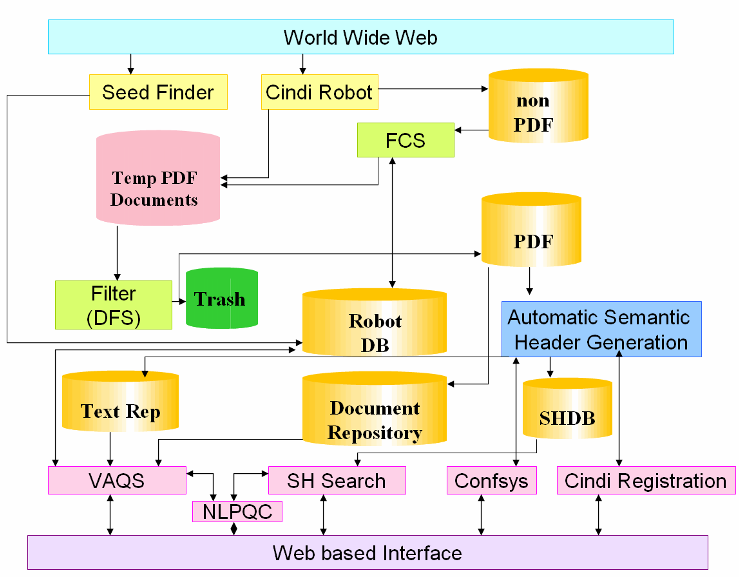
CINDI System
Bipin C. DESAI
Concordia University
Montreal, Canada
The proliferation of the Web has highlighted the importance of information discovery and retrieval as it is becoming a daily task for most users of the Internet. Search engines have made information search tasks much easier, however they retrieve links to documents based on term frequency, location of terms, link analysis, popularity, date of publication, length of document, and proximity of query terms. The CINDI System is a digital library(repository) for research papers in domain of computer science. The objective of CINDI project is to improving the discovery and search experience by targeting information to that required by all academics and professionals.
|
|||||||
Components of the CINDI System |
|||||||
Concordia Indexing Discovery System (CINDI) is a digital library (repository) designed to become a repository for any academic domain but currently we are limiting it to that of Computer Science and Software Engineering. CINDI's mission is to provide a tool for members of the global academic communities to express and explore ideas openly and freely, to acquire and develop the skills of intellectual inquiry, and to examine critically the various beliefs, practices in an attempt to find new insights and resolve outstanding problems for the benefit of all. CINDI's collects the academic documents in two ways:
The initial design of CINDI was based on the user initiated "push" mechanism. Herein, contributing users(authors) would register with the CINDI system and upload their documents. In addition to the user initiated push mechanism, current version of CINDI has opened up two additional channels. The documents in the repository comes from two sources: these are the papers submitted by authors to conferences managed by ConfSys (push paradigm) and documents download from the Web by the CNDRobot (pull paradigm). CINDI system includes following subsystems:
|
|||||||



